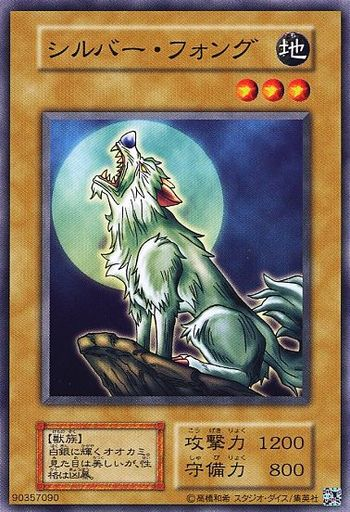Series 1 Monster Cards (Series 1 Card Layout Part 1)
While we're familiar with the modern card format, it wasn't something that'd been established immediately on release. What we call the UNIFIED WORLD FORMAT is something Konami built up to. So how did Konami design the earliest cards? Let's find out.
The previous post discussed the different types of cards that are the building blocks of the Yu-Gi-Oh! card game. Today's post will be discussing how Series 1 monsters were designed.
IMAGE
Race (
Lore Defense Power (
Password Copyright
NAME: As the name implies, this is the name of the card
ATTRIBUTE: The element in which the card is described as. Silver Fang (the monster above) is an EARTH Attribute monster The Attributes for the vast majority of cards in Yu-Gi-Oh! are:
DARKNESS - 闇 Yami
EARTH - 地 Chi
FLAME - 炎 Honō
LIGHT - 光 Hikari
WATER - 水 Mizu
WIND - 風 Kaze
RACE: Also translatable to Tribe, this is the group in which the monster belongs to. In the Japanese text,
ドラゴン Doragon "Dragon"
アンデット Andetto, "Undead" (TCG: Zombie)
LORE: Where flavor text for monsters are written.
ATTACK POWER (
DEFENSE POWER (
PASSWORD: This has no purpose in the game itself, but it is the location of the card on Konami's database. This is used in many of Konami's video games.
COPYRIGHT: The copyright of Kazuki Takahashi for his creation of the Yu-Gi-Oh card game. The year the card was printed is always posted here as well.
CONCLUSION
These have been more or less constants in Konami monster card design. The old cards before the Unified World Format can be read with a smidgen of understanding of Japanese, allowing everyone to see the foundations of the modern Yu-Gi-Oh! monster card as we know it today.
|
|
|---|


Comments
Post a Comment